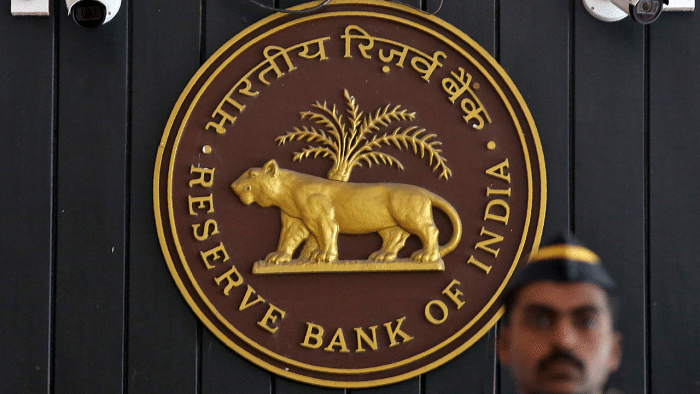
On May 29, the Reserve Bank of India (RBI) organised its maiden Conference of Directors of Banks for both public sector banks and private sector banks. RBI Governor Shaktikanta Das delivered a speech in the conference, titled ‘Governance in Banks: Driving Sustainable Growth and Stability’.
Given the conference was for the directors of banks, Das stressed on the role of the corporate board where directors are appointed. Das pointed that the Banking Regulation Act (1949) specifies qualifications of board members, which should be complied. The board members should act in an independent way, and remember "that their loyalty is to the bank and no one else". The purpose of the board is "to provide clear and consistent direction to banks". The board should also implement the bank’s corporate values, policies, and strategic objectives.
All these are laudable points, but one could make similar observations on the governance situation in the RBI itself.
RBI's Central Board
The RBI Act (1934) specifies that the central bank will be governed by the central board. The board has 21 directors, all of which are appointed by the Union government. Within the board, there are executive (five) and non-executive members (16). The executive members are the RBI Governor and four deputy governors. The remaining 16 are non-executive directors appointed from different sectors.
The 16 can be categorised into three: the first consist of four members representing the four local boards: North, South, East and West. The four local boards should have five members each who in turn nominate one member to the RBI’s central board. The second category, consisting of 10 members, is not defined as per RBI Act, but overtime it has been for experts from different fields. The third category consist of two government nominees, who usually are representatives from the Ministry of Finance.
There are three governance-related concerns about the functioning of this central board.
First, unlike the Banking Regulation Act (1949), the RBI Act does not specify the qualifications of the board members, barring local board members. For local board members, the law says that it must represent "as far as possible, territorial and economic interests and the interests of co-operative and indigenous banks". However, in the last few years the local board members are hardly appointed on these grounds.
Second, the central board has not had all its 21 members appointed for a very long time now. Currently it has only 15 members. Of the four local boards, only two have been nominated.
| RBI central board members | |||
| RBI Act, 1934, under Section | Directors | Strength (as per Act) | Current Strength |
| 8 (1) (a) | Governor | 1 | 1 |
| 8 (1) (a) | Deputy Governors | 4 | 4 |
| 8 (1) (b) | Local Boards | 4 | 2 |
| 8 (1) (c) | Different fields | 10 | 6 |
| 8 (1) (d) | Government Nominees | 2 | 2 |
| Total | 21 | 15 | |
Third, the appointment terms are opaque. The RBI Governor and RBI Deputy Governor cannot have more than a five-year term, and are eligible for reappointment. This has resulted in a typical tenure of three years. The directors from the local boards and different fields are appointed for a four-year term. They can be reappointed, but the maximum term is for eight years, either continuously or intermittently. The government nominees "hold office during pleasure of the government" — whatever that means!
Decision To Demonetise
Why does all this matter? It matters as Governor Das argued in his speech that a well-structured and composed board is vital for the functioning of commercial banks. The same logic applies to the RBI as well.
The RBI central board makes all the key decisions to the functioning of the central bank. It took one of the most (if not the most) important decisions in India’s monetary history — to demonetise high-value currencies with immediate effect on November 8, 2016. The Narendra Modi government used Section 26 of the RBI Act to withdraw legal tender status of Rs 500 and Rs 1,000 currency notes.
Ironically, the board was understaffed with just 10 members being nominated to the board at the time of demonetisation. Raghuram Rajan in his last speech as RBI Governor in September 2016 — a few months before demonetisation — raised concerns over vacancies in the board. He said: “Vacancies in the RBI Board, which have remained unfilled for many months now, should be filled quickly so that the full expertise and oversight of the Board can be utilised.”
It is well known now that demonetisation led to significant hardships for the common citizen. Would a full-strength board with adequate expertise have agreed to such a hasty course of action? Were the non-executive members who act like independent directors truly independent in taking the decision?
The board took another decision in 2016 which is still hard to fathom. It recommended issuance of a Rs 2,000 denomination currency while asking to withdraw smaller denomination notes. It made little sense, and yet the decision was taken.
Six-and-a-half years later, the RBI withdrew the Rs 2,000 currency note while keeping its legal tender status. While the RBI did not mention the decision was taken by the central board, given the board meeting was held on the same day, it is highly likely the board was privy to the decision.
Roman poet Juvenal’s Latin phrase "Quis custodiet ipsos custodies?" translates as "Who will guard the guards themselves?". The RBI guards the commercial banks and the central board guards the RBI. A full-strength board with well-defined expertise of full members and long-term appointments will go a long way in improving governance of the RBI.
(Amol Agrawal is an economist teaching at Ahmedabad University.)
Disclaimer: The views expressed above are the author's own. They do not necessarily reflect the views of DH.